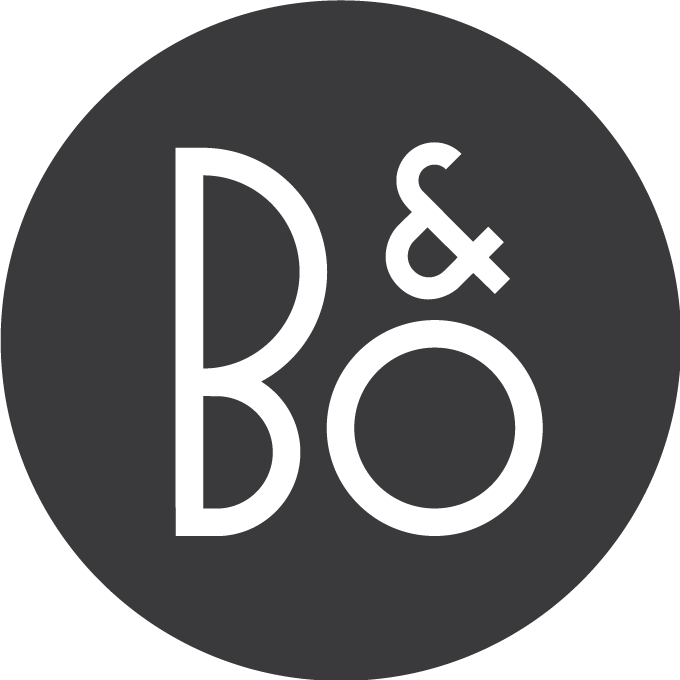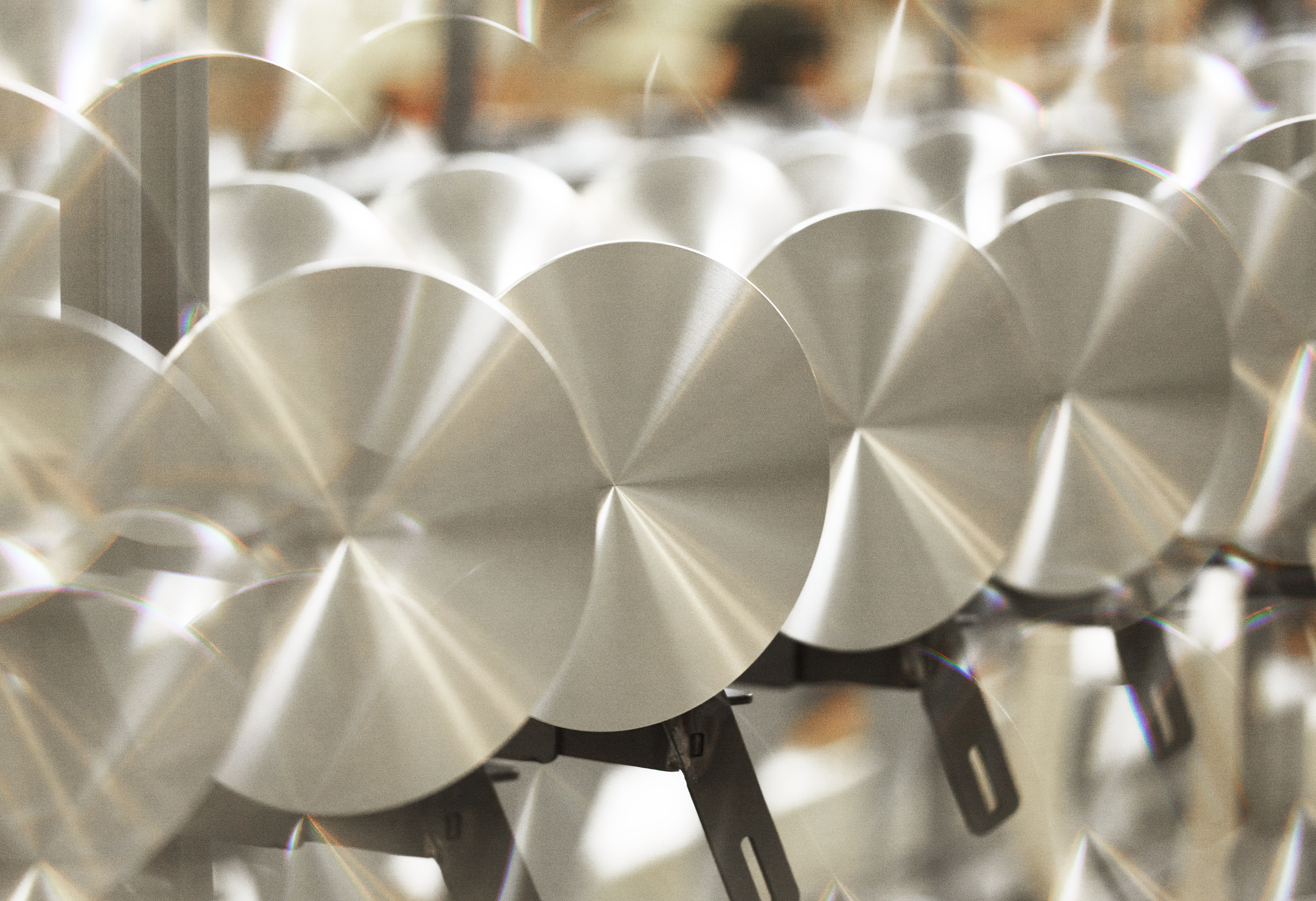Curiosity. That is what catalysed Bang & Olufsen’s pioneering work with aluminium. Read how the relationship with one material shaped the future for the entire company.
LEGACY
It's all about aluminium
Curiosity. That is what catalysed BANG & OLUFSEN’s pioneering work with aluminium. In 1955, when the industry convention was to use heavy metals such as cadmium, chrome and nickel in audio products, engineers at BANG & OLUFSEN became intrigued by the possibilities of aluminium, a material that was strong, flexible, flat and resistant to corrosion. Today, the slick, mirror-like aluminium surfaces have become an integral and ubiquitous part of the BANG & OLUFSEN and B&O PLAY design aesthetic. “Aluminium has had an instrumental effect, not just on how our products perform,” says Ib Kongstad, “but also on how they are designed.”
Ib should know better than most. Since joining BANG & OLUFSEN in 1984 as a chemical engineer he has worked as a technical specialist in anodising, which is the electro mechanical surface treatment of aluminium. This process, taking place at the BANG & OLUFSEN factory headquarters in the northern Denmark town of Struer, builds up a resistant oxide layer that gives aluminium surfaces their handsome glaze and make them so durable.
Inside Factory 5, cutters, grinders and steel transporters provide the soundtrack, while yellow lines on the grey floor mark off the work stations in which sheets and tubes of aluminium are transformed with an alchemist touch. First up is brushing and polishing. Ib points to the touch panel ear cup cap on the wireless BeoPlay H8 headphones to illustrate how the polishing create a spiral like-structure in the aluminium; its centred reflections swirl like a shiny wheel of fortune when you turn it around.
Standing on the factory floor are steel racks mounted with components from radios, TVs and car stereos. There are black aluminium tracks, which separate front fabric from plastic on the BeoPlay A9 speaker, car stereo cabinets that look like perfectly polished portholes on a yacht, and the pipe-shaped speaker cabinets from BeoLab18, neatly aligned with a sculptor’s elegance and precision.
In one of the high-tech lathe machines, the conical base for the BeoLab 18 - the one that completes its church organ pipe design - is taking shape. Aluminium shavings whirl inside the machine cabinet as the aluminium is turned and polished, while a foamy liquid - a 6% oil emulsion - splashes around like a washing machine.
50 TANKS OF DEGREASING, DESMUTTING AND OXIDISING
When the items and extruded aluminium profiles have been polished, they are loaded into the central hub of the factory: the anodising treatment facility. It was built in 1992 but, says Ib, remains “world-class”. From an environmental point of view, aluminium was also a world-class breakthrough, allowing BANG & OLUFSEN to move away from depositing heavy metals to recycling aluminium in places such as cement factories.
The anodising facility is 50 metres long and has 50 vats, each containing 3800 litres. A rail in the ceiling controls three robot cranes that hoist and lower the mounted aluminium components into the tanks, moving counterclockwise through a meticulous process that starts with degreasing - to clean dirt and oil - before moving on to desmutting, oxidising, dyeing and sealing. Interspersed between these stations are tanks of water to rinse the material and keep it moist at all times.
Standing on the steel landing alongside the tanks, you are witness to a strangely seductive mechanical performance, as the robot-like transporters move the pristine design elements through this agility course to strengthen its surface and performance. I watch as lens speaker caps from the BeoLab 18 are lowered into the water, mounted side by side like synchronised swimmers strapped to titanium racks. After a quick dip, one of the transport cranes lifts up the racks and drops them in the desmutting vat’s nitric acid mixture to remove any alkaline residue that has built during etching. Then it is on to the oxidising phase.
Colouring the panels, caps, cabinets and pipes is a carefully choreographed technique that has been developed by Ib and his colleagues in response to the visions and demands of BANG & OLUFSEN’s designers. The first spray-painting system was built in the early 1990s and took its cue from the dairy industry where it is also crucial to deep-clean tanks and wipe out traces of alien material.
"Aluminium has had an instrumental effect, not just on how products perform" says Ib Kongstad, "but also on how they are designed."
One of the first BANG & OLUFSEN products to feature dyed aluminium was the Avant 28, a widescreen TV which had a large wall-like frame, a VCR player and an aluminium band sitting below the front panel speaker.
Ib recounts how David Lewis, BANG & OLUFSEN's then head of design, turned up at Factory 5 with a unique request. “He came and told us that he wanted the colour on the aluminium band to be ‘young Bordeaux’. It also had to be fresh and UV stable. Sometimes, Lewis would use crayons to find the right colour. He overlapped the crayon colours and suddenly he would say: ‘that one!’ That was the colour we then had to pinpoint for our paint system.”
In the control room next to the anodising facility, computer screens track the movement of the mounted aluminium materials from the factory floor buffer zone to the different tanks. Yellow boxes on the screen highlight the movement of the transporter robots - smooth and efficient like an air traffic controller centre - even if it’s all run on an innocuously looking PC that looks somewhat underwhelming considering the mechanical wonder of the plant.
LOOK CLOSER:
B&O PLAY Concept Manager Jakob Kristoffersen tells about the use of aluminium on BeoPlay H8 and Beolit 15.
“The use of aluminium on the H8 headphones is really interesting and carefully engineered. The die-cast slider arms, which regulate the headband, are sandblasted, and the outside hairline surface is brushed in the direction you would experience wear and tear. This also gives it a matt finish, which contrasts the glossy touch interface on the ear cap. The inner circle of the touch interface is only 0.2 millimetres thick and utilises a technology whereby the touch sensor registers the forging of the aluminium.”
“With Beolit 15 we took the B&O aluminium design in new directions. The grill wrapped around the speaker cabinet is created from an aluminium plate where the holes have been punched out individually. The perforated plate is then shaped, sandblasted and treated to a special anodising process that generates a matt surface with fewer reflections. What we are looking for is to give it that real “craftsmanship look” and the feel of forged aluminium.”
When Jackie Chan kissed the factory floor
In a window frame next to the computer, stands a red-coloured aluminium rail with a light gold engraving: “Technology can bring peace to the world.” The words and the handwriting belong to Hong Kong-born movie star Jackie Chan, a BANG & OLUFSEN admirer of more than 35 years, who came to visit Factory 5 in 2012. When Chan entered the production facility, he kneeled down and kissed the factory floor; it was as clean as a restaurant, said the actor. In return, he was given a Beovision 10 TV engraved with those words of wisdom he wrote down during his visit.
Ib has worked with various artists over the years, including renowned American painter and sculptor Miya Ando, who created a series of aluminium frames that matched bespoke hand-dyed BANG & OLUFSEN speakers. These artists’ appreciation for BANG & OLUFSEN's craftsmanship, and their collaboration with the team at Factory 5, has been a huge source of inspiration in their quest to further develop the potential of aluminium surface treatment. “We still have the freedom to test the limits,” says Ib. “It brings us to the edge of where something may or may not be possible.”
Making the impossible possible is what drives the team here. Although you see the audio components in isolated stages of development - a gun metal-coloured car speaker grill, the raw polished frame of a remote control - this is where they push the boundaries of performance. And this is why the designers turn to the anodic coating specialists at Factory 5 early in the development phase.
“There are no limitations,” says Ib. “We don't like to say no. We have a designer-driven business and that's why we are the most advanced aluminium factory. It’s because our designers push us to the limit. You couldn't outsource this kind of production to any other company.”
“They would run away screaming.”






